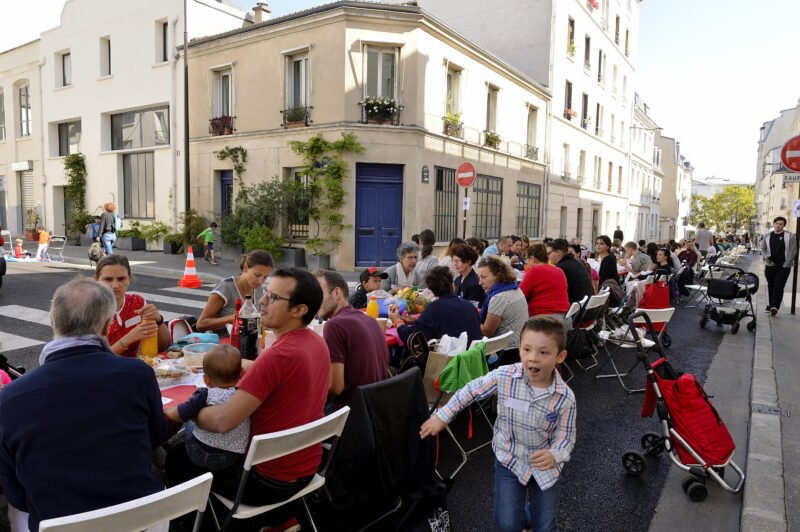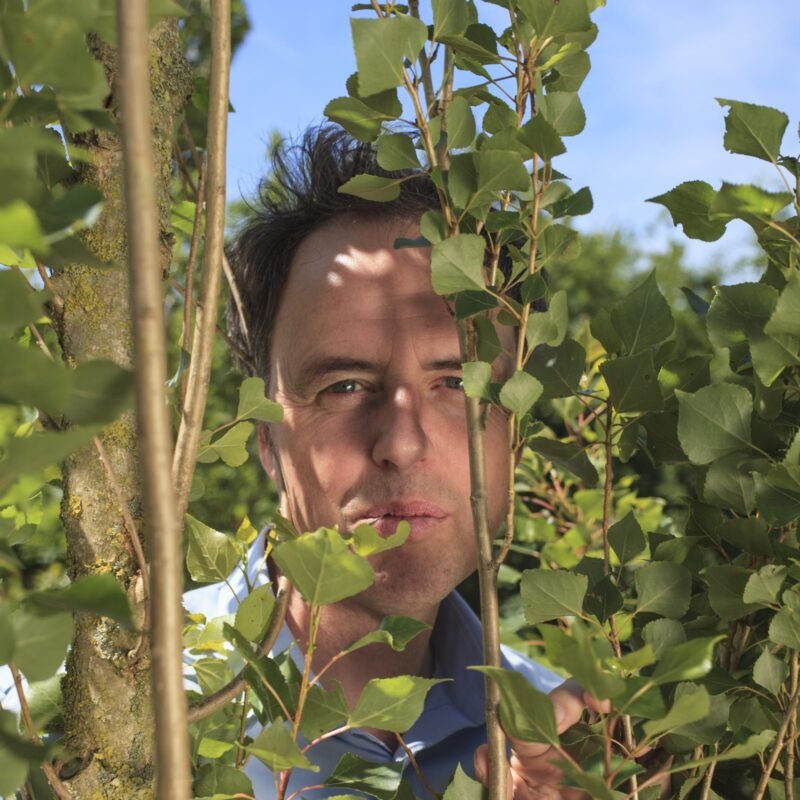Urban Agriculture, Part 1: The Community Gardens
 In 1932 Frank Lloyd Wright presented the so-called Broadacre City in his book ‘The Disappearing City’.
In 1932 Frank Lloyd Wright presented the so-called Broadacre City in his book ‘The Disappearing City’.
“The Broadacre City, where every family will have at least an acre of land, is the inevitable municipality of the future… We live now in cities of the past, slaves of the machine and of traditional building. We cannot solve our living and transportation problems by burrowing under or climbing over, and why should we? We will spread out, and in so doing will transform our human habitation sites into those allowing beauty of design and landscaping, sanitation and fresh air, privacy and playgrounds, and a plot whereon to raise things.”
Often referred to as a Utopia, The Broadacre City is now celebrated through landscape urbanism projects all around the world. Often considered as the main ecological threat, the city can now play in addressing the environmental challenges and part of its regeneration will take the form of urban agriculture. This trend is not new but the economic downturn along with the wish for cheaper and healthier food fueled a new relationship with nature in the city. The public is not only aware of this necessary shift and ready for it but it is actively taking part in making the city more sustainable. So let’s start this new series of posts about trends in urban agriculture with the community gardens.
New York is now famous for its urban farms. Some of them like Gotham Greens provide the New Yorkers with fresh and healthy food indirectly by working for restaurants and retailers. Others like Added Value give priority to direct positive social impact on urban communities. Added Value is a non profit organisation that has revived local parks and transformed vacant lots into community gardens with the involvement of teenagers living in Brooklyn. As the award winning chef and food activist Marcus Samuelsson writes: “Added Value doesn’t just grow fresh, delicious food, they also grow and empower community leaders who will undoubtedly propel Added Value and other socially active food justice movements into the future.”
Growing Power promotes community gardens as a way to fight against ‘food deserts’ where the only access to food is corner grocery stories filled with processed foods and fast-food restaurants. Since 1995, this Milwaukee-based food movement founded by Will Allen, has shared knowledge and passion to encourage worldwide cities to “provide equal access to healthy, high-quality, safe and affordable food for low- and middle-income people of all races.” through community gardens and farms. Will Allen sees “Growing Power as a way to organize people whose voices are rarely heard and to fight racism”. People matter most in this movement. By growing food, they know what fresh and good food tastes, they are empowered and feel better about themselves, they are willing to stay in their community and they take care of each other.
Detroit was once the capital of America’s car industry. Over the last six decades, the city has lost big businesses and half its population. But a movement of return to land farming by dedicated citizens and urban farming entrepreneurs has taken over the city and has been spreading hope for the future. Community gardens have filled the empty lots and many of them are producing vegetables and plants for local residents to harvest for free. As reminded by the Guardian, Detroit inhabitants are returning their city to its pre-industrial roots when it was a farming region. Some are even developing a model that could provide the urban farmers with a living wage. The industrious past of Detroit might raise some doubts about the quality of this industrial soil. The Guardian writes “The strange thing about Detroit is that the soil of its urban landscape is capable of supporting farming even after more than a century of urbanisation. Though many factory sites are contaminated, the land under the city’s houses is often not. Now, with each round of farming, harvesting and composting, it’s improving every year. Earthworks’ crops of vegetables and fruits are even certified organic.”
Some Detroiters drew their inspiration from the Parisian market gardens of the 19th century. There was a time when 6% of Paris was devoted to agriculture and it was self sufficient in fresh vegetables. Today, the 60 “jardins partagés” and the older worker gardens are far from these ambitions. Two months ago, Paris’ Week of Sustainable Development promotes the development of community gardens and tried to convince that the city was still in the race for impressive green programs. In the exhibition “”+2º: Paris s’invente!”, the architecture firm Collectif et alors imagined a Utopian Paris in 2100. 2ºC warmer, no cars, urban farms everywhere… More pictures here.

“In this reinvented Paris, the Seine becomes a place to live life, the roofs are made accessible, housing is adapted, Parisians reappropriate the streets once monopolized by cars, bikes are used in fast lanes, metro stations become places of open sky, farms are set up in the city…so many alternatives transform the City.”
London also has an old tradition of “allotment gardens”. They started in the 19th century and flourished in the 1940s, 1950s. Studies report alarming losses of London’s gardens but the mayor Boris Johnson is pleased about his Capital Growth program that created 1000+ community food gardens tended by 35,000 Londoners. Still, there is room for lawlessness actions of guerrilla gardeners who transform scraps of public land into gardens with the back up of the community. Lately, the View Tube and the Dalston Roof park projects incorporated arts in the community garden projects or vice versa. Educating people about food and arts.

“Dalston Roof Park is part of wider work we are doing to ensure that the regeneration of Dalston is based around micro development – bottom up improvements that involve the local community and have wide ranging positive effects.”
In Amsterdam, Free State SWOMP was squatted by groups De Pijp and Groenfront in July 2008. With the collaboration of local, international, socially disadvantaged groups, alternative communities and skilled professionals, they opened community and individual gardens and demonstrated that it is possible to grow food in abandoned areas of our cities with or without the help of the public authorities. Still, there is a long road ahead to derive urban agriculture from a sustainable trend to a standard practice of both everyday life and city design. I wonder if that depends on the public authorities or not. Heard of exciting community gardens projects anywhere else? Please shout and we’ll continue the world tour.
[adrotate banner=”7″]



